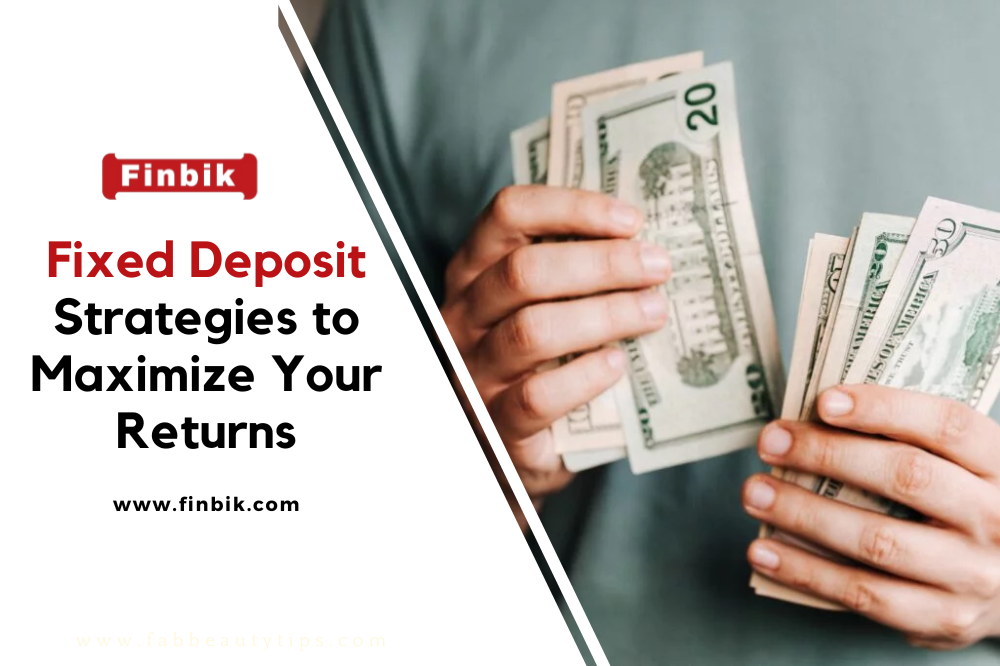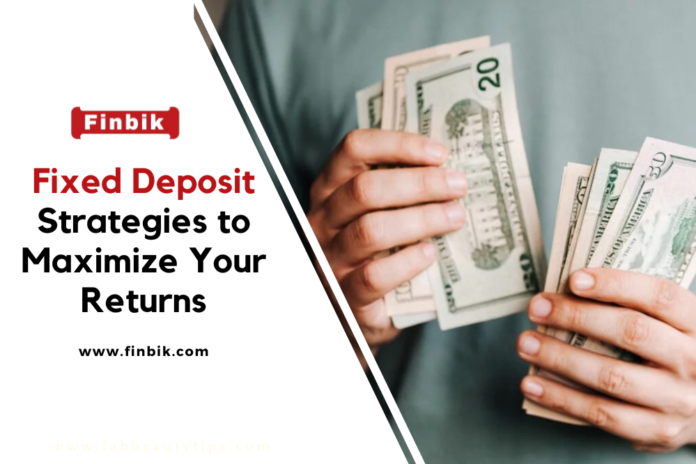Fixed deposits (FDs) are a popular investment option for individuals seeking safety and stable returns. However, to optimize the benefits of fixed deposits, it’s essential to adopt the right strategies. In this article, we will explore ten fixed deposit strategies that can help you make the most of your investments and achieve higher returns.
Strategy1: Diversify Your FD Portfolio
Strategy2: Ladder Your FD Investments
Strategy3: Choose Cumulative or Non-Cumulative FDs
Strategy4: Opt for Senior Citizen FDs
Strategy5: Avoid Breaking FDs Prematurely
Strategy6: Stay Informed About Interest Rate Changes
Strategy7: Reinvest Your Interest Earnings
Strategy8: Compare FD Rates Across Banks
Strategy9: Factor in Tax Implications
Strategy10: Review and Adjust Your FD Portfolio Regularly
- What is a fixed deposit, and how does it work?
- How do I choose the right tenure for my fixed deposit investment?
- Are there any risks associated with investing in fixed deposits, and how can I mitigate them?

Strategy 1: Diversify Your FD Portfolio
Rather than putting all your funds into a single fixed deposit, consider diversifying your FD portfolio across different tenures and financial institutions. By spreading your investments, you can take advantage of varying interest rates and maturities. This strategy helps mitigate risk and ensures that you have access to funds at different intervals, providing liquidity when needed.
Strategy 2: Ladder Your FD Investments
Laddering your FD investments involves splitting your total investment amount into multiple fixed deposits with varying maturity dates. For example, if you have Rs. 50,000 to invest, instead of putting it all in a single FD, allocate it into five separate FDs with tenures of 1 year, 2 years, 3 years, 4 years, and 5 years. As each FD matures, you can reinvest it or use the funds as required, reducing the impact of changing interest rates.
Strategy 3: Choose Cumulative or Non-Cumulative FDs
Fixed deposits come in two types: cumulative and non-cumulative. In a cumulative FD, the interest is compounded and paid along with the principal at maturity. On the other hand, non-cumulative FDs offer regular interest payouts, such as monthly, quarterly, or semi-annually. Choose the type that aligns with your financial goals. If you need a regular income stream, opt for non-cumulative FDs; for long-term growth, choose cumulative FDs.
Strategy 4: Opt for Senior Citizen FDs
If you are a senior citizen, many banks offer special FD schemes with higher interest rates. These Senior Citizen FDs provide additional benefits to those above a certain age, enhancing your returns on investments. Always check with various banks to find the best rates and terms for senior citizens.
Strategy 5: Avoid Breaking FDs Prematurely
Breaking a fixed deposit prematurely can lead to lower interest rates and even penalties. Try to avoid withdrawing your FDs before maturity, as this can significantly impact your returns. Only break an FD in case of emergencies, and explore other options like taking a loan against your FD to avoid penalties.
Strategy 6: Stay Informed About Interest Rate Changes
Fixed deposit interest rates can fluctuate over time. Keep yourself updated with the prevailing interest rates in the market. When rates are expected to rise, consider opting for shorter tenures to capitalize on the higher rates in the future. Conversely, in a falling rate scenario, longer tenures can lock in higher rates.
Strategy 7: Reinvest Your Interest Earnings
When your FDs reach maturity and interest is paid out, consider reinvesting the interest earnings into a new fixed deposit. By doing so, you can compound your returns and steadily grow your investment portfolio over time.
Strategy 8: Compare FD Rates Across Banks
Different banks offer varying interest rates on fixed deposits. Before investing, compare rates offered by different financial institutions to find the best deals. Online comparison tools can help you find the most competitive rates for your investment amount and tenure.
Strategy 9: Factor in Tax Implications
Interest earned from fixed deposits is subject to taxation as per your income tax slab. Consider the tax implications while calculating your overall returns. For individuals in higher tax brackets, investing in tax-saving fixed deposits (5-year tenure) or other tax-efficient investment options might be more beneficial.
Strategy 10: Review and Adjust Your FD Portfolio Regularly
Finally, review your fixed deposit portfolio periodically and adjust your strategies based on changing financial goals and market conditions. Stay proactive in managing your investments to ensure they align with your evolving financial needs.
FAQ
1. What is a fixed deposit, and how does it work?
Answer: A fixed deposit (FD) is a type of investment where you deposit a lump sum of money with a bank or financial institution for a predetermined period, typically ranging from a few months to several years. During this tenure, the bank pays you a fixed interest rate on your deposit. At the end of the term, you receive the principal amount along with the accumulated interest. FDs are considered safe and low-risk investment options, making them popular among risk-averse investors.
2. How do I choose the right tenure for my fixed deposit investment?
Answer: The choice of the right tenure for your fixed deposit investment depends on your financial goals and liquidity requirements. Shorter tenures, such as 3 to 6 months, offer flexibility and quicker access to funds, while longer tenures, like 1 to 5 years, may offer higher interest rates. Consider your financial needs, future expenses, and investment objectives to determine the most suitable tenure for your FD investment.
3. Are there any risks associated with investing in fixed deposits, and how can I mitigate them?
Answer: Fixed deposits are generally considered safe investments, but there are some risks to be aware of. The main risk is inflation risk, where the returns from FDs may not keep up with the rising cost of living, leading to a decrease in purchasing power. Additionally, breaking an FD prematurely may lead to lower interest rates and penalties. To mitigate risks, consider diversifying your investment portfolio, opt for shorter tenures during uncertain economic conditions, and only break an FD in emergencies.
Conclusion
By implementing these ten fixed deposit strategies, you can make informed decisions, maximize returns, and make the most of your fixed deposit investments. Diversification, laddering, choosing the right FD type, staying informed about interest rate changes, and regular portfolio reviews can lead to a more secure and rewarding investment journey. Remember to consult with a financial advisor to tailor these strategies to your specific financial goals and risk tolerance.
Articles You May Like
Fixed deposit vs Recurring deposit : Which is better?

